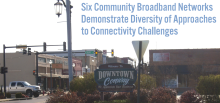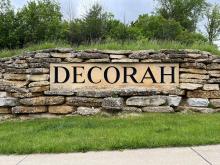
There are more than 600 wireline municipal broadband networks operating across the United States today. And while the ongoing discussion about our information infrastructure by Congress has placed a renewed emphasis on publicly owned endeavors to improving Internet access, the reality is that cities around the country have been successfully demonstrating the wide variety of successful approaches for decades.
In this report, published by the Benton Institute for Broadband and Society, ILSR's Sean Gonsalves, Christopher Mitchell, and Jericho Casper profile how six community networks in a diverse range of places stepped up to meet the needs of their communities, bringing faster, more reliable, and more affordable service.
It covers:
- Huntsville, Alabama
- Conway, Arkansas
- Ocala, Florida
- Dalton, Georgia
- Ammon, Idaho
- Cheshire County, New Hampshire
The projects above, the report shows, run the gamut from municipally owned and operated fiber networks, to cable system upgrades, to last-mile open access networks, to public-private partnerships.
From Benton:
Communities seeking to create a more competitive broadband market and/or target low-income neighborhoods with high-quality, modestly priced service are increasingly building their own networks, whether in partnership with ISPs or on their own. Local governments considering this option have to do their homework to find appropriate consultants, vendors, business models, and more.
But as the communities profiled here demonstrate, there are many models and opportunities to improve Internet access.
This report offers a preview of a large compendium of case studies - to be published by Benton later this summer - showing how dozens of community networks have brought thoughtful investment and better Internet access to communities all around the country. "While including explorations of some of the networks that have struggled," the report "concentrates on the vast majority of community-led broadband networks which have succeeded, providing robust service where it had not been available before or providing competition for incumbent cable and telephone companies."
Read the report preview here [pdf].
Header image via Wikimedia Commons from Someone's Moving Castle used in accordance with the Creative Commons Attribution-Share Alike 3.0







